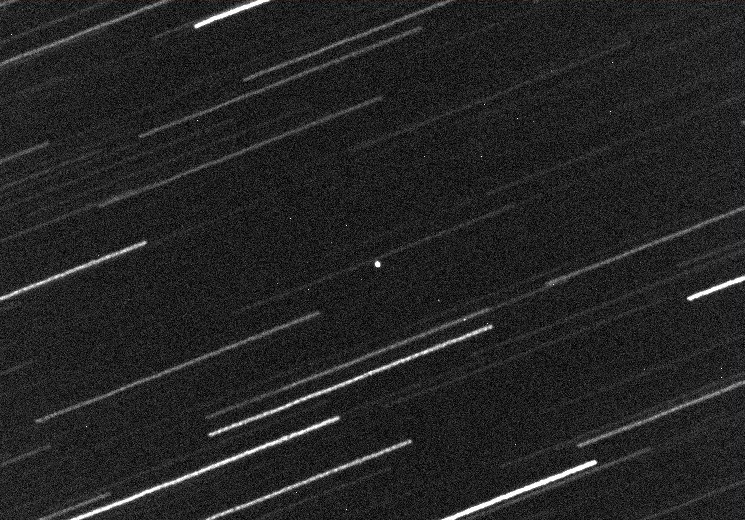
A small asteroid buzzed Earth last night (Nov. 1), just hours after astronomers first spotted the space rock.
The asteroid 2016 VA zoomed within about 48,000 miles (77,000 kilometers) of the planet at 8:32 p.m. EDT (0032 GMT on Nov. 2), according to researchers with the Minor Planet Center (MPC) in Cambridge, Massachusetts. To put that into perspective, the moon orbits Earth at an average distance of 239,000 miles (385,000 km).
The space rock, which is thought to be 23 to 72 feet (7 to 22 meters) wide, was traveling about 48,000 mph (77,000 km/h) relative to Earth during the close encounter, MPC scientists said.
2016 VA was discovered just yesterday, by astronomers with the Mt. Lemmon Survey in Arizona. Surprise asteroid encounters like last night's flyby aren't uncommon; millions of space rocks are thought to orbit the sun in Earth's neighborhood, and scientists have discovered just 15,000 of them.
Indeed, a previously unknown object famously slammed into Earth's atmosphere above the Russian city of Chelyabinsk in February 2013. This rock exploded in the air, generating a shock wave that shattered thousands of windows in the city below; more than 1,200 people were wounded by shards of flying glass.
The Chelyabinsk object was probably about 66 feet (20 m) wide, scientists have said. (Asteroids have to be much bigger to cause damage on a global scale; researchers think impacting space rocks must be at least 0.6 miles, or 1 km, wide to threaten human civilization.)
Observations of 2016 VA indicate that the asteroid orbits the sun every 10.5 months, on a path that's much more elliptical than Earth's. 2016 VA gets as close to the sun as 0.43 astronomical units (AU), and as far away as 1.4 AU. (One AU is the average distance from Earth to the sun — about 93 million miles, or 150 million km.)
Get the Space.com Newsletter
Breaking space news, the latest updates on rocket launches, skywatching events and more!
You can learn more about 2016 VA at the MPC site here: http://minorplanetcenter.net/db_search/show_object?object_id=2016 VA
Follow Mike Wall on Twitter @michaeldwall and Google+. Follow us @Spacedotcom, Facebook or Google+. Originally published on Space.com.
Join our Space Forums to keep talking space on the latest missions, night sky and more! And if you have a news tip, correction or comment, let us know at: community@space.com.

Michael Wall is a Senior Space Writer with Space.com and joined the team in 2010. He primarily covers exoplanets, spaceflight and military space, but has been known to dabble in the space art beat. His book about the search for alien life, "Out There," was published on Nov. 13, 2018. Before becoming a science writer, Michael worked as a herpetologist and wildlife biologist. He has a Ph.D. in evolutionary biology from the University of Sydney, Australia, a bachelor's degree from the University of Arizona, and a graduate certificate in science writing from the University of California, Santa Cruz. To find out what his latest project is, you can follow Michael on Twitter.









